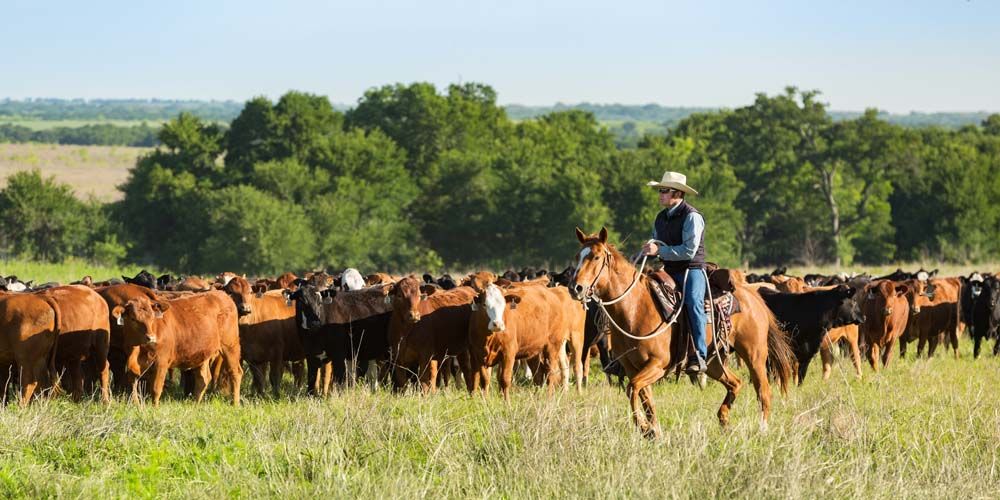The Tiny Vineyard
Homestead grapes are nothing to fear
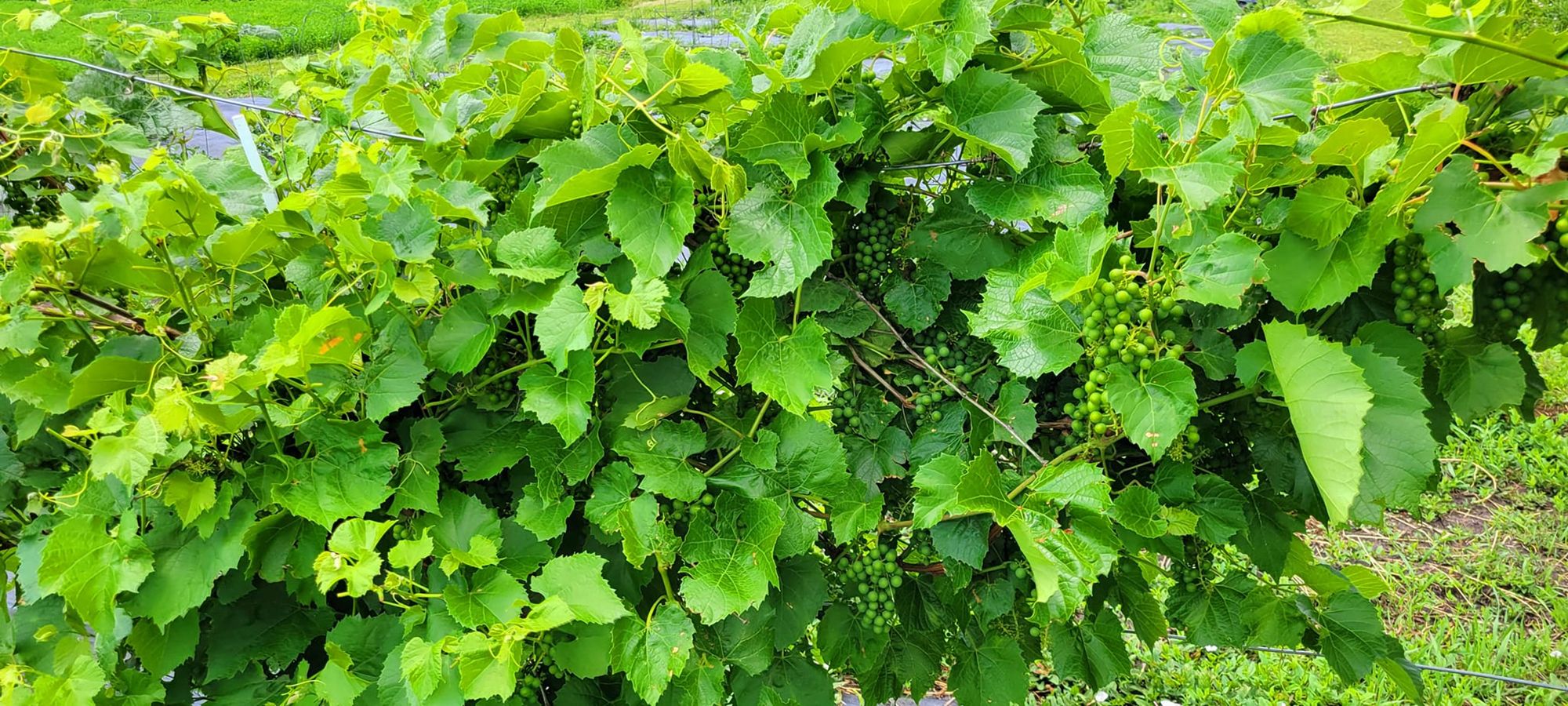

Written by: Jeffrey Miller

I've always been fascinated by grapevines. While anyone who enjoys wine knows of the commercial vineyards in Italy, France, California, and many other area around the world, it's surprising to some that there are vineyards in every one of the United States-even Hawaii and Alaska.
However, small homesteads or hobby farms are perfect places to plant a tiny vineyard, if a few critical steps are followed. Best of all, you can start small.
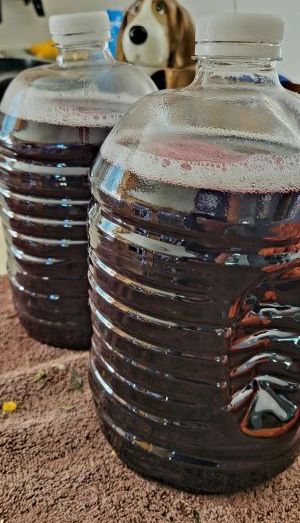
Wine is the most healthful and most hygienic of beverages.
~Louis Pasteur
Choose your variety
In the northern part of the U.S. (zones 4-7), European grapes cannot be grown. 1-Io,-vever, cold-hardy varies of American vines survive frigid, winters and produce grapes in the short growing season.
The grape grower must decide what the result of the fruit will be used for.
Talented wine makers can coax delicious flavors out of some varieties, while others make delicious juices and jellies. There are a few, such as Somerset Seedless, that produce delicious, strawberry-flavored seedless table grapes.
Find the right location
Grapes need well-drained, fertile soil in full sun. As most diseases of grapes occur in moist, dark circumstances, access to open areas with a breeze is best.
While there are entire books written on trellising systems, when planting a couple plants, a simple 2-wire systems is easiest. At my home, our grapevine trellis system has a wire at 3 feet and another at 6 feet. As the grapes grow, weave the vines around the trellis. Simplicity is best for the tiny vineyard.
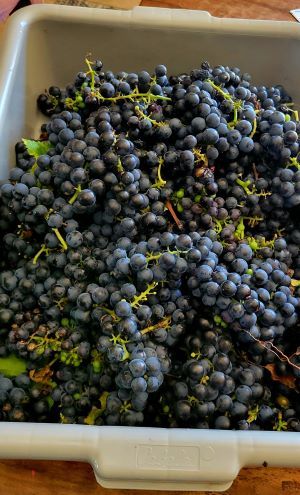
A homesteader takes us through his vine-yard install.
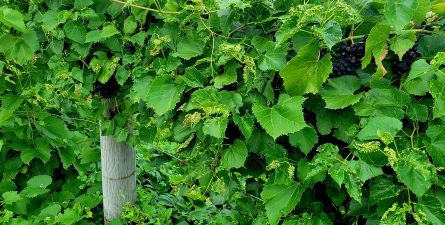
Nurseries offers tips of getting started
https://www.monrovia.com/be-inspired/5-easy-steps-for-growing-grapes.html
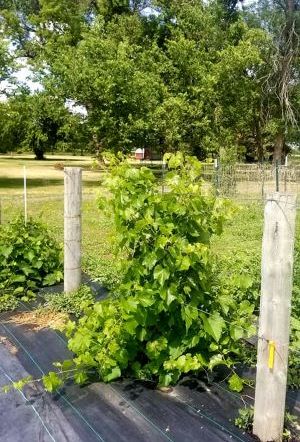
Into the ground
Grapevines are easy to plant. As an ardent believer in bare-root plants, I simply ordered 5 plants from a northern vine supplier. Tip: Ordering from a supplier in the same general zone where you live ensures plants that will grow.
I simply placed woven fabric weed barrier down around the posts and trellis, cut a hole in the fabric for each vine, and planted them to the root collar. Spacing of 10 feet or so allowed for ample room for each plant.
Training and growth
After reading pages on the Internet on grape vine maintenance, my head was spinning.
There are many ways to accomplish the task, so I opted for simplicity. I wait to prune until the vines start to bud, to remove dead canes, and optimize new growth more easily.
Grapes are produced on year old canes, so I cut the older canes out to make room for the newer growth, leaving plenty of year-old growth to produce fruit.
Diseases and pests to watch
The most common grape diseases, at least in the North where I live, are powdery mildew and phylloxera.
Powdery mildew occurs during damp weather and in areas of little air movement.
Spring pruning reduces vegetation and allows for ample air movement.
If powdery mildew is discovered, there are chemicals available that help reduce the fungus. Consulting a local commercial vineyard will help determine what works in your area.
Phylloxera, another common disease, shows up as small galls on grape leaves, caused by a tiny aphid-like insect. While the disease caused a major reduction of grapevines in Europe, here in North America our native grape stocks-from which nearly all the cold hardy breeds are selected-survive these insects. Phylloxera causes unsightly cosmetic issues but rarely affects the production of the vine.
Pests of the hooved variety can also be hard on grapevines, especially when they are young. As the buds break among the first green foliage of the spring, deer will gravitate to the tender new growth.
We tried caging each vine with wire mesh, but the quick growth soon popped out.
A tiny vineyard can best be protected with fencing, which is expensive, or deer repellant sprays. On our vines the product Plantskydd animal repellent works very well and is affordable.
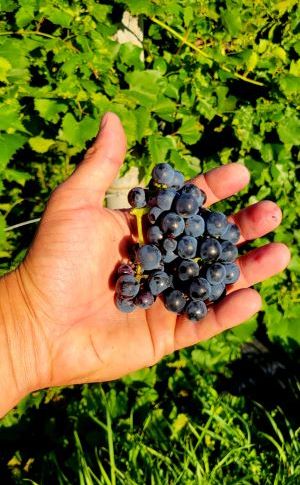
Harvesting and the next steps
As the summer progresses, the green bunches of grapes begin
to deepen in color. The ripening of grapes, called versaison, is an exciting time. Winemakers will harvest based on a number of factors, but fortunately, the tiny vineyard is much simpler.
We harvest our grapes based on two things: Taste and birds.
When the birds start to flock around our tiny vineyard, that's our sign that the grapes are ready. I'll pick the ripest looking grapes and taste-test them. Once they are sweet enough for juice, we harvest.
Harvest is when the work pays off.
Using a pruning shears, we cut snip each bunch off the vine, tossing them into a tote. Different varietals ripen at different times, so even a tiny vineyard harvest may stretch over a few weeks.
The best part: We will sit on the deck during the coolness of the evening, sipping wine and stripping the grapes off each bunch.
The fresh grapes go into our steam juicer, with the pure juice flowing out
into gallon jugs. The barest amount of sugar is used to sweeten the resulting nectar, with a few varieties requiting no additional sugar.
Water-bathed can in quart jars, the juice is a wonderful treat for a cold winter's day.
Your tiny vineyard
After harvest, the leaves turn fiery and eventually fall. The tiny vineyard is dormant for the year, but all too soon spring is back, and the vines start to bud. Grapevines live for many years, setting the table for a perennial harvest of wonderful fruit.
While small in size, a tiny vineyard will pay large dividends for years to come.
About the author:
Jeffrey Miller Iives with his signficant other Melanie and their four children at Cottonwood Bend Farm, on the banks of the Sheyenne River in eastern North Dakota. The Director of the Cass County Soil Conservation District by day, he works on their homestead in his free time by writing, growing food, and trying to keep the chickens happy.
Tags:Acreage Accents

Acreage Life is part of the Catalyst Communications Network publication family.













